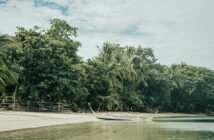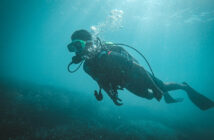I like night diving! There is an aspect appealing to me, the biologist happening during night dives, and there is a very powerful psychological effect of night diving as well. To me, few things are as relaxing as being underwater at night, in the middle of the darkness, in warm water, with no one there to bother me, just some interesting wildlife around me, popping up out of nowhere.
If you’d like to learn how to night dive, most certification agencies (I teach via PADI) offer instruction for night diving via their advanced courses. I myself did my first ever night dive outside of such a course (2002 in Egypt!) but it’s a good idea to get some instruction before heading our for a dive at night. I’d like to share some of the more subtle points which I have found to make my night dives better:
- Don’t shine your light right at your buddy’s eyes AND don’t shine it into the eyes of the critters you want to observe. Keeping the center of the cone of your dive light 30 cm away from the fish or shrimp you observe will freak the animals out less.
- Less is sometimes more with dive lights. Your eyes will adapt to darkness. The critters will be spooked out less by dimmer lights. These days you can get really high-powered dive lights, I have seen them with up to 10000 lumen. These are similar in power to what you find on the front of an off-road racecar – there is no need for this kind of power unless you film larger (wide-angle) scenes.
- Similarly, some critters react less adversely to red than to white light.
- When you want to show a critter to your buddy, remember where it is and stop shining your dive light on it for a moment. This will make the critter less likely to escape or burry itself into the sand. Then, get a hold of your buddy, lead him or her to the critter and then shine the light on the animal again.
What You’ll See
I was really lucky in the last few months, with excellent diving conditions in the part of the Philippines where I live, and lots of interesting small nocturnal animals being active. In April and May I observed and filmed a variety of juvenile scorpionfishes, crabs which I had to contact experts to get an ID for, and a school of vertically swimming fish which used my video light as a hunting aid. Check the footage out here:
This is a video from one of the best night diving sites in Dauin, Negros Oriental, Philippines, the artificial reef in front of the former El Dorado resort. The top attraction there, in my opinion, are the 2-3 individuals of large basking stars, brittle stars (echinoderms widely related to sea stars) which unfold to an area of almost a square meter, and become nocturnal plankton filtering nets.
Siquijor, the island next to us, also has excellent night diving. The great variety of crustacean, especially the marble shrimp, always intrigues me over there. Lots of different flatworms, too.
I hope you enjoyed these tips and this footage.








